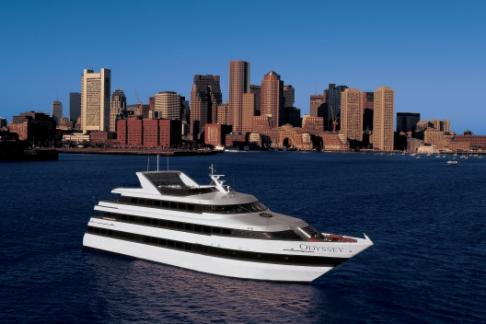Libre
Soutien

Kennedy Space Center Visitor Complex (KSCVC) is a must see destination in Central Florida. Less than an hour east of Orlando, KSCVC provides a mixture of the past and the future, with rich historical references in each of the exhibits, coupled with a clear vision into the future, bolstered by the amazing learning from both the International Space Station and the Hubble telescope photos. Admission to KSCVC includes all of the exhibits, attractions, the IMAX theatre tickets and a very comprehensive bus tour to the Apollo/Saturn V Center. Admission also includes entrance to the U.S. Astronaut Hall of Fame, which for history and science buffs is where you will want to start your day! There is a new exhibit called Science on a Sphere. The U.S. Astronaut Hall of Fame has a wide range of hand-on exhibits for kids and is also the home of the Astronaut Training Experience (known as ATX).
TOWER BRIDGE Over 100 years ago, the Victorians built a bridge that has become one of London's most famous landmarks. High level walkways were built to allow people to cross the Thames whilst the Bridge was lifted to let tall ships sail past. Today these Walkways act as viewing galleries, giving visitors the most spectacular views across an ever changing London skyline. Visitors enter Tower Bridge Exhibition via the North Tower. They are then transported by lift to the top of the Tower (47 metres above the Thames) where they have a unique opportunity to see the Bridge’s steel skeleton from within. A short film explains the history and provenance of the Bridge and then there is the chance to admire the spectacular views – from both covered Walkways. On the east Walkway there are fantastic views of the Docklands and from the west Walkway you can see the new GLA building, the Tower of London, St Paul’s, the city, the Pool of London and Big Ben and the London Eye in the distance. Interactive computerised kiosks and graphic panels explain the significance of the views to visitors, as well as providing more information on the history and building of the Bridge. The interactive material and graphic panels are written in seven languages and an audio loop for the hard of hearing is also in place for the video show. There is another film to view in the South Tower before descending for the short walk to the historical Engine Rooms, included in your ticket price. Victorian Engine Rooms These provide a fascinating insight into late 19th century engineering. Installed for the completion of Tower Bridge in 1894, these huge, and beautifully maintained, coal-driven engines were used to power the thousands of bascule Bridge lifts performed until 1976. Although lifts are now operated by electricity, the original steam engines are still in place. The Engine Rooms give visitors a chance to experiment with models demonstrating the technology behind the Bridge. There are also some amazing photographs of the Bridge throughout its lifetime – including a revealing picture of the heavy steel structure of the Bridge as the stone cladding was installed over it.
Seating Chart: Stephen Sondheim Theatre Runtime: 2 hours and 30 minutes, including one 15 minute intermission Rating: BEAUTIFUL—The Carole King Musical is recommended for ages 11 and up. There is no foul language, but there is talk about the use of drugs. Please be advised that children under the age of four will not be permitted into the theatre, and every person who enters the Stephen Sondheim Theatre will require their own ticket. Handicap Accessible: Yes Hearing Assistance: Yes Concessions on each level with a restaurant on the upper mezzanine. Theatre entrance in street level to the mezzanine. Orchestra level is down one level by escalator. A brand new theatre bethind the original facade. The theater will be the first in NYC to meet the U.S. Green Building Council™s standards. Wheelchair Seating Available
Silhouette:Mermaid / Trumpet; Hemline / Train:Sweep / Brush Train; Closure:Zipper UP; Built-In Bra:Yes; Embellishment:Sequin; Fabric:Sequined; Sleeve Length:Long Sleeve; Tips:Professional dry cleaner only,Colors may vary slightly due to different monitor settings; Boning:Yes; Style:Sparkle,Beautiful Back; Occasion:Formal Evening,Party Wear; Neckline:V Neck; Front page:Evening Dresses; Listing Date:10/11/2021; Bust:; Hips:; Hollow to Floor:; Waist:
Take in the impressive views and explore the facilities and attractions before heading up the chairlift to the start zone of the Skyline Luge. The Queenstown Luge is a unique wheeled gravity ride that provides riders full control over their descent on two purpose built tracks, scenic or advanced. Enjoy five Luge rides at your own pace before riding the Gondola back down to earth. YOU SHOULD BRING: Sunglasses Hats Warm clothes during winter periods
Silhouette:Mermaid / Trumpet; Hemline / Train:Sweep / Brush Train; Closure:Zipper UP; Built-In Bra:Yes; Embellishment:Draping; Fabric:Satin; Sleeve Length:Sleeveless; Tips:Professional dry cleaner only,Colors may vary slightly due to different monitor settings; Boning:Yes; Style:Celebrity Style,Elegant; Occasion:Formal Evening,Engagement; Neckline:One Shoulder; Front page:Evening Dresses; Listing Date:10/25/2021; Bust:; Hips:; Hollow to Floor:; Waist:
